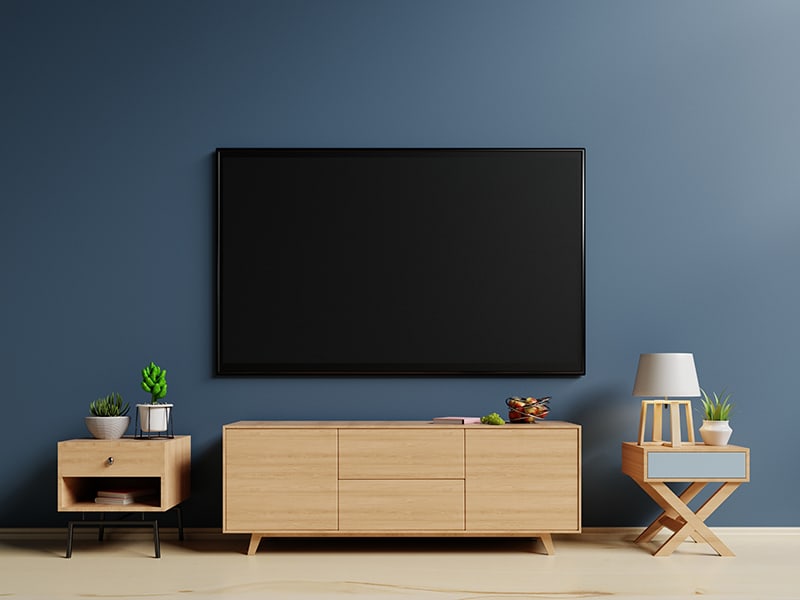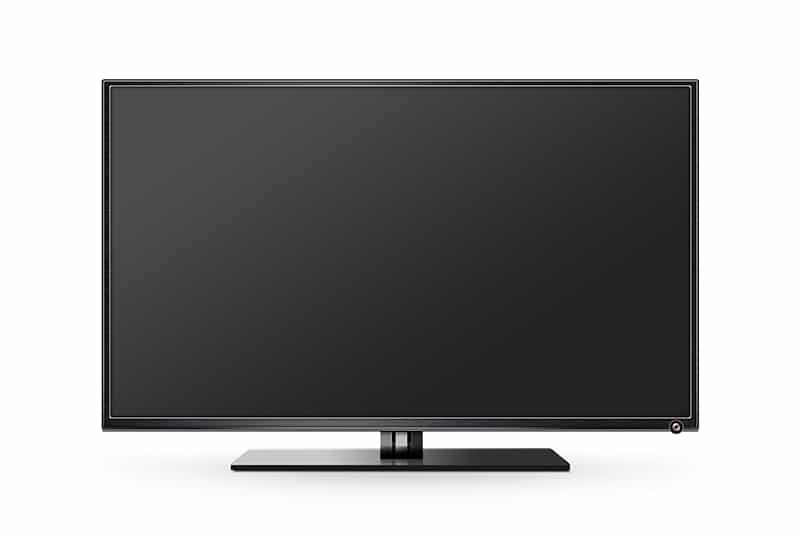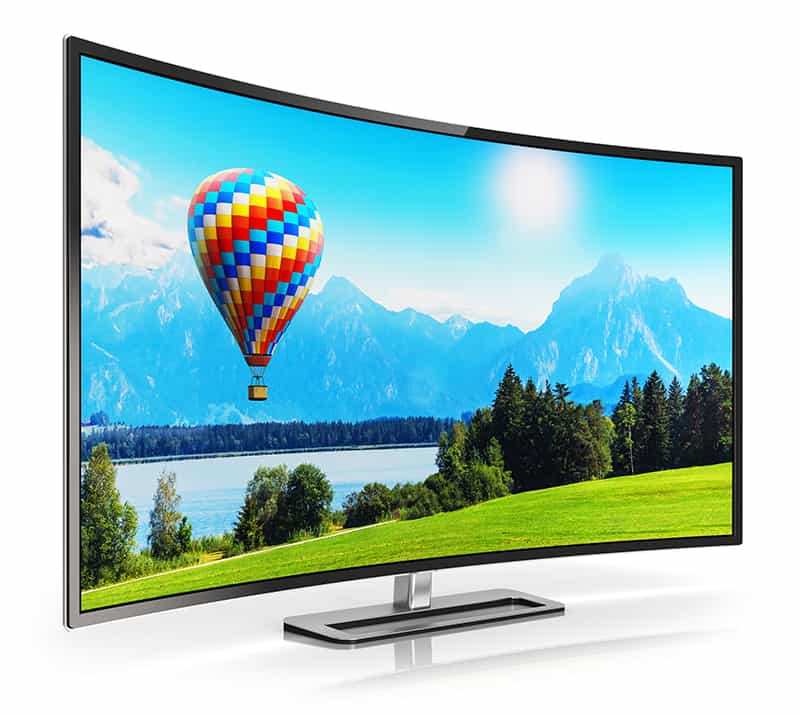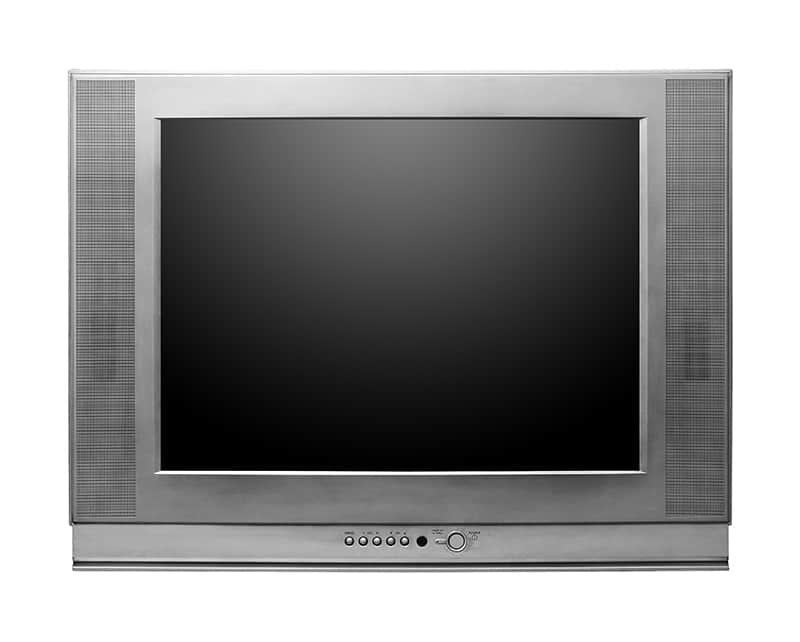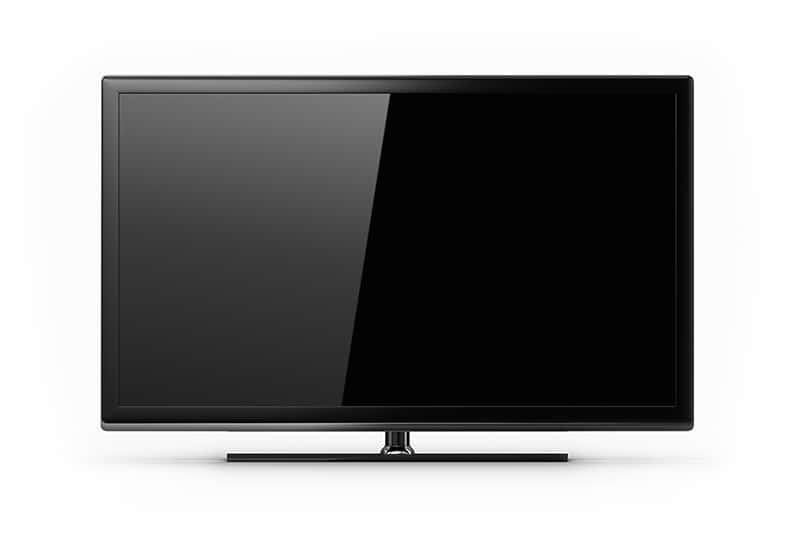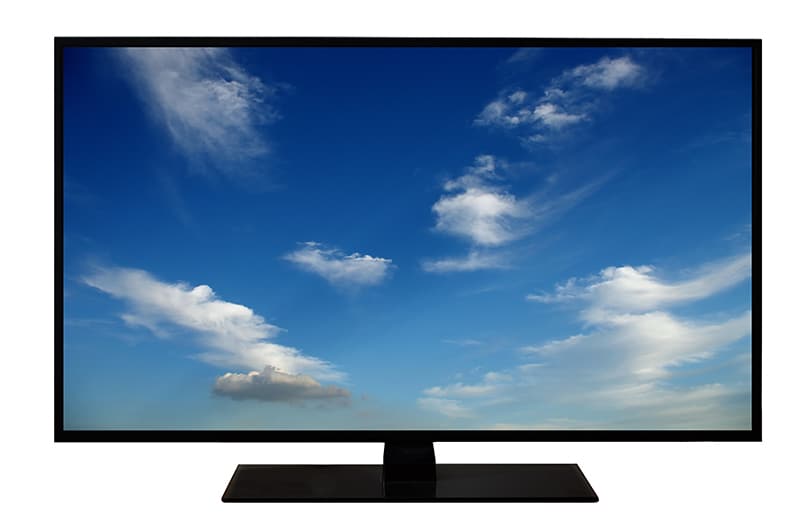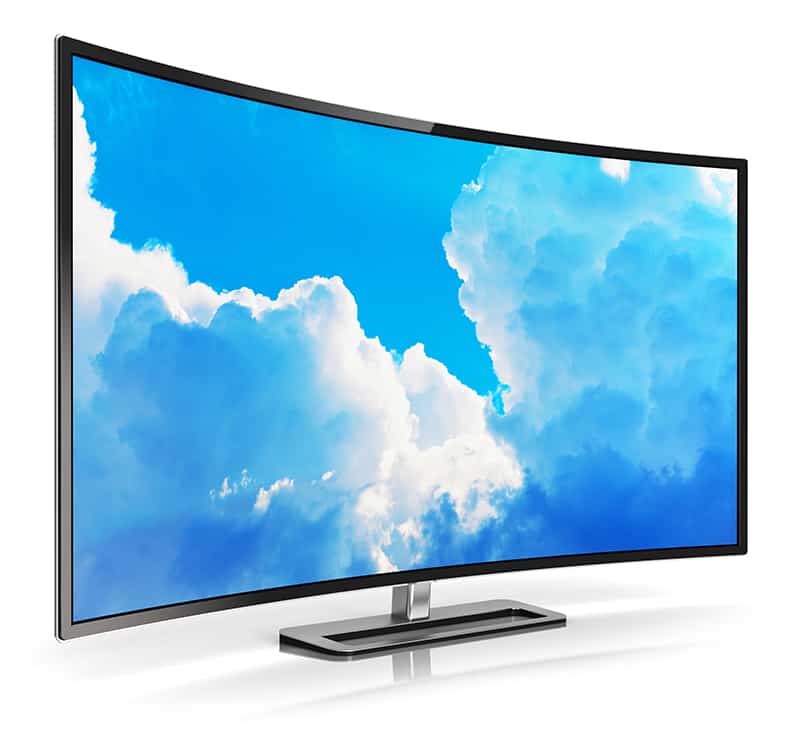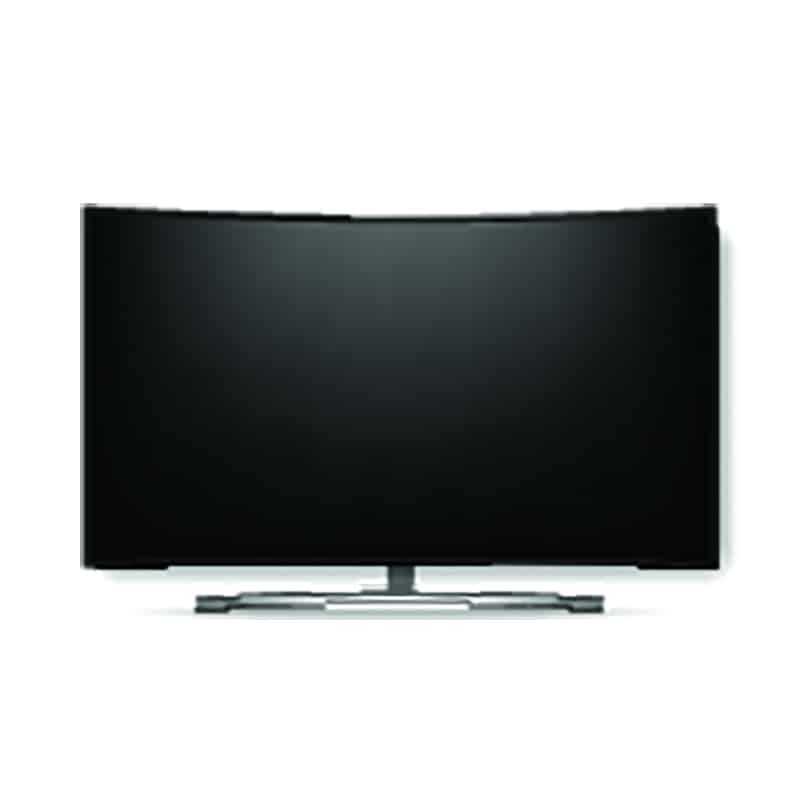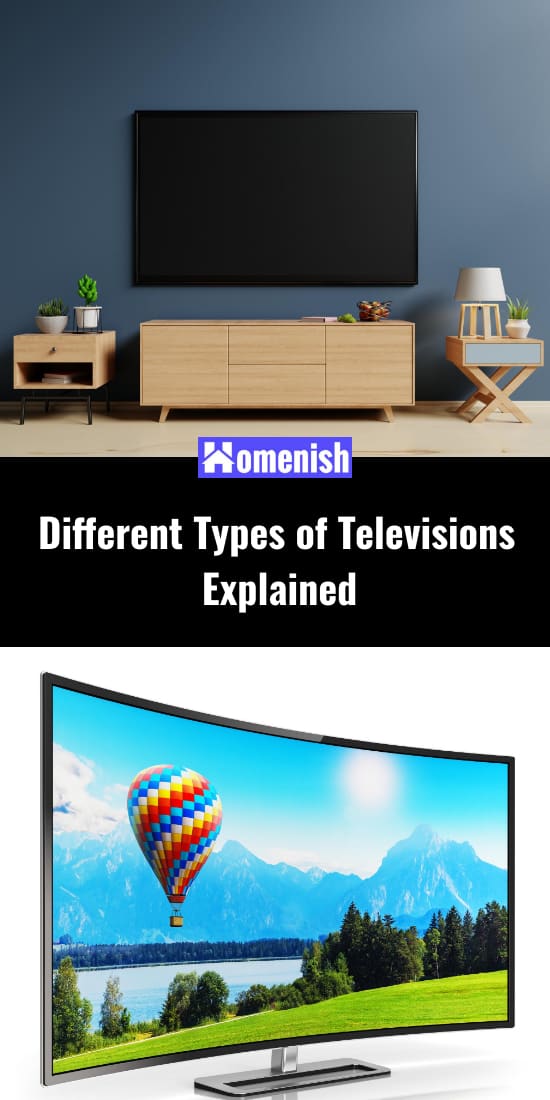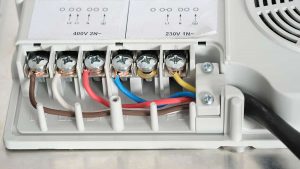According to the latest figures released by research from Nielsen Co, the average American household watches just under four hours of television each day, equating to almost two solid months out of every year being spent in front of our TV screens.
It’s no surprise then, which people are happy to spend substantial amounts of money on new televisions, and want to ensure they are getting the best possible TV in their budget.
Most families will replace their television set every seven years, meaning buying a TV is quite a commitment as you will have it with you in your home for a considerable amount of time. It’s vital then, that you do your research and ensure you’re confident in the TV you choose.
Before you get overwhelmed in deciding between brands and models, you first need to make sure you understand the specific types of TV available. This will ensure you know what you want, know what you are looking for, and know what represents a good deal.
Over the years, there have been several different types of technology when it comes to television screens, many of that may have passed through your home. Here we learn about the two main types of television screens currently available, the five main types of television technology that have been popular over the years, and the added extras you can find on some models of television.
Television Screen Types
Flat
Early television screens were not flat and instead curved in a direction away from the viewer. The first flat screen television was invented in the 1960s in Illinois, in the United States, but it wasn’t until the 1990s that large flat-screen televisions were introduced to the public.
At around $15,000, the first 42-inch flat-screen television was beyond the realm of possibility for most people, but as technology began to improve, flat-screen became more accessible to the masses, and over the last two decades, they have become the norm. Most people now have slimline flat-screen televisions in their homes, which give a greater viewing experience and also fit in more seamlessly with home interiors.
Curved
Modern curved televisions became available to consumers in 2013, though they had been used by projectors since the 1950s. The selling point of curved television screens is that they offer a more immersive viewing experience, giving the viewer the feeling that they are right there in the action.
They also mean that you should get a good view no matter where you sit in the room, unlike flat-screen televisions where you need to be sat directly in front of the screen to get a good view. These types of screens have proved popular among some users, but they are not nearly as widespread as flat-screen televisions. In part, this is probably due to the price, as curved TV sets tend to be more expensive.
Television Technology Types
Direct View
Direct view televisions are also known as ‘cathode-ray tube’ televisions, or ‘CRT.’ These are the types of TVs that were standard across all brands of television sets and games monitors throughout the 20th century. You will likely be very familiar with these types of televisions as the ones you had in your home when growing up. It is very easily recognized with a big TV dimension, small screen size, heavy weight, and low picture quality. These types of televisions have since been largely replaced by newer flat panel TV technology, and they have ceased to be manufactured.
You cannot buy new direct-view televisions, though there are many still around in second-hand stores, charity shops, or one peer-to-peer marketplaces. You might be wondering why anybody would want to buy one of these old-fashioned televisions, but actually, they work better than modern flat screens for many vintage game consoles that have come back into fashion in recent years.
The reason for this is that many game consoles that were invented during the reigning era of direct view televisions were created with the CRT technology in mind, so for the best graphics and compatibility, this is the best type of television to go alongside your retro game consoles.
Plasma Display Panels
Plasma display panels, also known as ‘PDP,’ were first introduced to consumers in the 1990s. These were the first type of flat-screen televisions to be released, and they quickly became very popular. By the early to mid-2000s, most television owners had opted for the new style plasma display panel flat-screen televisions over the seemingly outdated cathode-ray tube televisions.
Plasma televisions are so-called because they contain an ionized gas called plasma, which has a response to electric fields. The screen of a plasma display panel is essentially a grid filled with tiny plasma-containing pixels. A plasma TV was especially popular in larger models, and by 2007 had become the preference for anyone buying a new large TV. However, better technology like TVs with LED backlight, low-cost LCD screen, or high-resolution 4k, 8k OLED, QLED was soon to take over, and 2007 was to prove to be the height of the plasma display panel’s popularity.
Either way, with these two options available, there was little reason for anyone to opt for a plasma television, and by 2014 the manufacturing of this type of TV had been brought to a final halt in the United States.
China followed shortly afterward and stopped manufacturing plasma display panels in 2016. The low demand for plasma televisions signaled the decline of the technology, and these televisions are now considered to be obsolete.
Digital Light Processing (DLP)
This type of television was invented in the 1990s by an American technology company called Texas Instruments, with its headquarters in Dallas, Texas. It works using a digital micromirror device with over a million tiny pixels or microscopic mirrors.
A digital signal activates these mirrors, causing them to either tilt away from or toward the source of light, which creates an image. The resulting viewer experience is very smooth and far preferable to cathode-ray tube televisions.
Digital light processing televisions also have many advantages over competing plasma televisions, including the fact that they typically have longer lifespans and are more slimline and more lightweight. They are especially impressive for watching fast action shows or movies because the high speed moving of the mirrors makes for seamless viewing.
Though digital light processing televisions briefly seemed like a great new technology, they were soon replaced by more efficient television technology. By 2012 the manufacturing of these televisions had been brought to a close due to dwindling demand. The competition proved to be more alluring, with new technology televisions that had thinner screens, quieter running sounds, lower energy consumption levels, and better response times.
Used or refurbished digital light processing televisions are still available, and these can be picked up fairly cheaply.
Liquid Crystal Display (LCD)
Liquid crystal display televisions are made from three polarized glass panels that have liquid crystal molecules running between them. Each panel is a different color; red, blue, and green. As an electric current passes through the liquid crystal molecules, they respond by opening or closing to allow different levels of light to flow through. The result is that the light and color can be controlled to alter the image being displayed on the screen.
This technology was first invented in the 1960s, and by the 1980s it was available to consumers in the form of pocket games consoles and portable computers. However, it wasn’t until the mid-2000s that LCD televisions really took off. By 2006 the price of LCD televisions began to drop, making them more affordable for consumers, though at this time, plasma televisions represented better value for money. However, in 2007 LCD televisions and plasma televisions prices were leveled, so consumers were able to buy whichever TV they preferred with virtually no price difference.
By 2008 it was evident that LCD popularity had soared far ahead of both plasma televisions and DLP televisions, signaling the demise of both of these technologies. LCD televisions have since maintained their dominance over the market and continue to be the most common type of television purchased today. This is due to the LCD’s crystal clear imagery, combined with their reasonably low prices compared to the comparable competition.
An LCD these days is typically backlit with LED lights, and so it is sometimes known as LED TV or LCD LED TV. These two names are interchangeable, and both refer to the same type of TV. LCD televisions are known for being affordable, lightweight, slim, and having an impressive image display.
There are some disadvantages to LCD televisions compared with their competitors, and these include high energy consumption and inferior contrast radio. LCD technology is not just used for televisions, but it is also utilized on smartphone displays, computer screens, digital clocks, and watches.
Organic Light-Emitting Diode (OLED) Display
These televisions contain an organic light-emitting compound that works in response to electric currents. Due to the fact that the compounds used in OLED TVs naturally emit light, these types of TVs do not need any backlighting, compared to LCD TVs that use LED for their backlighting.
This is significant because it means an OLED TV requires much less energy to function, and in fact, can represent a saving of as much as 40% of energy when compared with an LCD TV. This is good news for both the environment but also for your bank balance, as it could save you significant money on your energy bills over the years.
The filter layers required by LCD TVs are also not necessary for OLED televisions, which results in OLED TVs being both more slimline and more lightweight, giving them a more modern look in a home interior and being easier to install on a wall.
Since being released to consumers in 2012, OLED televisions have been gradually becoming a serious competitor against LCD televisions. They are known to offer better color quality than LCD TVs. However, they also have some drawbacks, which probably accounts for their relatively slow rise to popularity.
The biggest problem with OLED televisions is that the compounds it uses are organic, and therefore these will naturally degrade over time. This means that the TVs do not have a great lifespan, and the vibrancy of the color will fade in time. That being said, this technology is being continually worked on, and many of the current OLED televisions boast a lifetime of at least 100,000 hours.
If you’re looking to buy a TV, then you will probably find that LCDs currently offer better value for money, though if you are intent on having a more vibrant television image, then OLED will offer the better picture.
For the majority of people, the difference in image quality will be barely noticeable, and therefore more people will opt for an LCD TV due to the lower cost. However, the prediction is the OLED televisions will begin to drop in cost in the coming years and be more accessible for everyone.
Quantum Light-Emitting Diode (QLED)
This technology is similar to LCD, but it uses quantum dots instead of liquid crystals. This technology was pioneered by Samsung and has only been available to consumers since 2016, making it relatively new to the market.
Typically, you can expect to pay the most money for the latest technology of a QLED TV. However, QLED TVs are more affordable than OLED TVs. QLED represents the middle ground in terms of price between its two main competitors; these TVs are more expensive than LCD TVs but less expensive than OLED TVs.
The benefit of quantum dots over liquid crystals is that they are said to result in a more vivid color display and brighter images, which have been the main complaint about LCD TVs. Samsung is so convinced that QLED TVs are the most superior type of television technology available that they do not even manufacture any OLED TVs and instead have focused all of their television manufacturing efforts on building an expansive line of QLED TVs.
Not all technology companies agree, though, and the other big contenders- LG, Panasonic, and Sony- all use OLED technology in their top of the range television sets. In terms of performance, OLED TVs are known to have superior contrast ratios than any other type of television on the market. However, the technology used for QLED televisions means that the screens can be larger, and they will also have a longer life expectancy.
Television Extras and Specifications
High Dynamic Range
This feature is more commonly known by its acronym, ‘HDR.’ The term ‘high dynamic range’ stems from photography, where the higher the HDR is, the clearer and more lifelike a photograph will be, with greater contrast between dark and light colors. Similarly, having an HDR TV will make the visual images you watch look more lifelike; there will be greater definition in all of the imagery, and this results in a more vivid experience.
Many modern televisions have HDR as standard, though if you haven’t upgraded your TV set in recent years, you may not have this feature yet. Even when it comes to HDR, there are different levels.
Currently, there are five different types of HDR, with HDR10 being the most common format of HDR, which has been widely adopted by most popular television streaming services, including Netflix, Amazon, and Disney+.
If you buy a new TV in the near future that is a 4K UHD TV, then this will certainly have HDR10, as all 4K TVs being manufactured will have this feature as standard.
Smart
Smart TVs are those that have internet access, and can therefore be used almost like a computer. If you have recently purchased a new TV, then it will be sure to be a smart TV because all large TV manufacturers only sell smart TVs as of 2019. For most people, a smart TV allows them to watch a streaming service without having to use any additional equipment. You can also watch YouTube on your TV or even check social media accounts and send emails.
Voice Activated
Many TVs are now incorporating voice activation into their included features. If you’ve ever used Amazon’s Alexa or Apple’s Siri, then you already have a good understanding of how a voice-activated TV works. Instead of using the remote control to physically select a channel, you would say out loud the action you wanted it to perform, for example, ‘Play Grey’s Anatomy’ or ‘Go to the Fox News Channel’.
Resolution
The resolution of a TV tells you how many pixels your screen will have, with the more pixels signaling a better image. TVs currently available to buy come in four different resolution options. These are HD, with a resolution of 720 pixels, Full HD, with a resolution of 1080 pixels, UHD (Ultra HD) or basically 4K, with a resolution of 2160 pixels, and finally 8K, with a resolution of 4320 pixels. The better the resolution, the better your viewing experience will be, though higher resolution TVs also generally come with a higher price tag.
Refresh Rate
Most TVs have a 60Hz refresh rate, meaning that these TVs have their images refreshed 60 times per second. Though you’ll see some high-end TV like 4K, 8K resolution OLED can have a 120Hz refresh rate, but 60Hz tends to be the norm.
TV Port
TV Ports are important if you want to connect other devices or accessories to your TV. Nowadays, you can easily reflect your device screen to the TVs using Bluetooth, or wifi, but for a better connection, people often connect them through the VEGA ports, and recently HDMI ports, USB-C ports
